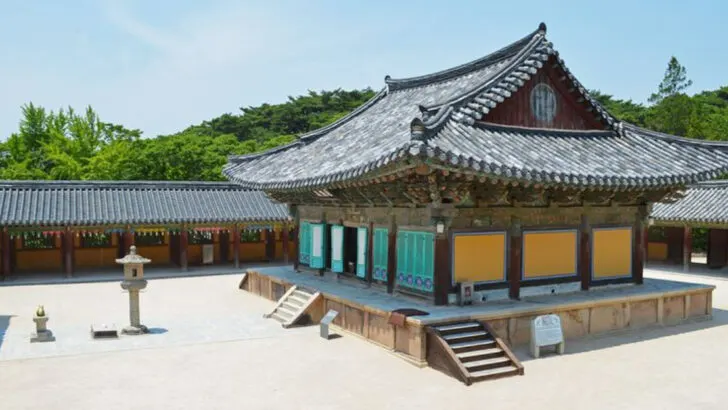Asia is home to some of the most stunning temples in the world, each offering a unique glimpse into the rich tapestry of spiritual and cultural history. From ancient architectural marvels to vibrant centers of worship, these temples are a testament to the diverse traditions that thrive across the continent. This collection highlights 15 extraordinary temples that deserve a spot on any traveler’s itinerary.
Angkor Wat — Siem Reap, Cambodia
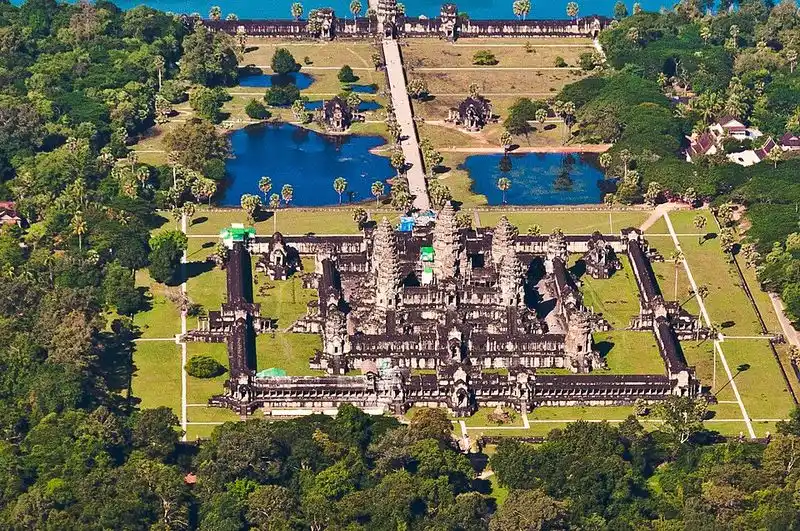
Considered the world’s largest religious monument, Angkor Wat stands as a symbol of Cambodia’s enduring spirit. Built in the 12th century, this majestic temple complex features intricate carvings and grandiose architecture.
Visitors often gather at dawn to witness the temple’s silhouette against a vibrant sunrise, casting a magical glow over the ancient stones. Originally dedicated to the Hindu god Vishnu, it later became a Buddhist site.
Its scale and beauty leave an indelible impression, drawing millions of tourists annually. Whether you’re an architecture enthusiast or a history buff, Angkor Wat’s grandeur is unforgettable.
Borobudur — Central Java, Indonesia
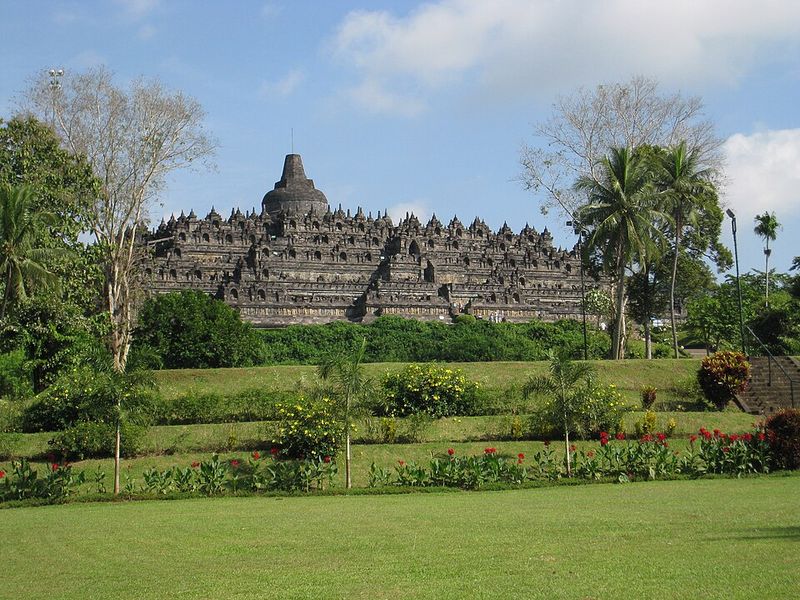
Borobudur, nestled in the lush landscapes of Central Java, is the world’s largest Buddhist temple. Constructed in the 9th century, its design resembles a mandala, symbolizing the universe.
The temple’s expansive terraces are adorned with over 2,500 relief panels and 72 stupas, each housing a statue of Buddha. At sunrise, Borobudur transforms, offering breathtaking views over the surrounding volcanic peaks.
This UNESCO World Heritage site serves as a center for pilgrimage during Vesak, attracting visitors worldwide. Its spiritual significance and artistic splendor make Borobudur a captivating destination.
Mahabodhi Temple — Bodh Gaya, India
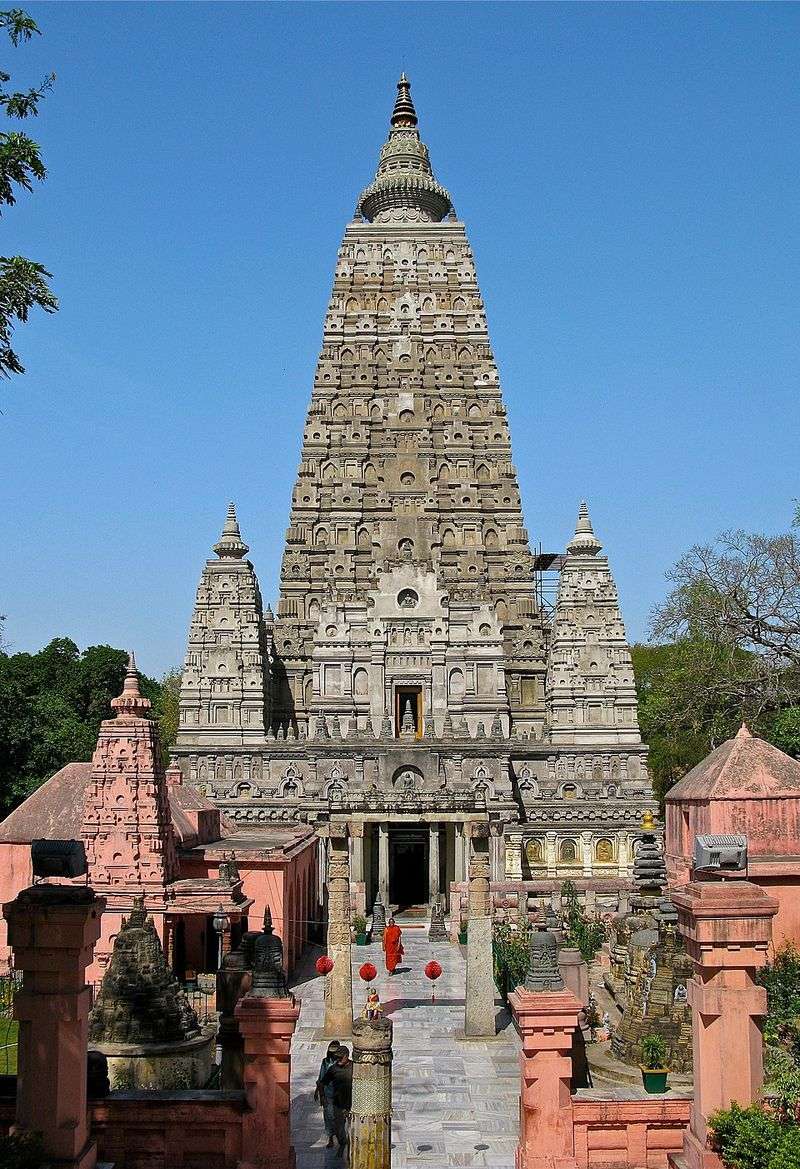
In the serene town of Bodh Gaya lies the Mahabodhi Temple, a sacred site for Buddhists worldwide. It marks the location where Siddhartha Gautama attained enlightenment under the Bodhi tree.
The temple’s spire, a magnificent example of ancient Indian architecture, reaches towards the sky. Pilgrims can be seen walking in meditation around the temple’s base, reflecting their devotion.
Surrounding the main temple are several smaller stupas and meditation spots. Recognized as a UNESCO World Heritage site, the Mahabodhi Temple is a place of profound peace and spiritual reflection.
Shwedagon Pagoda — Yangon, Myanmar
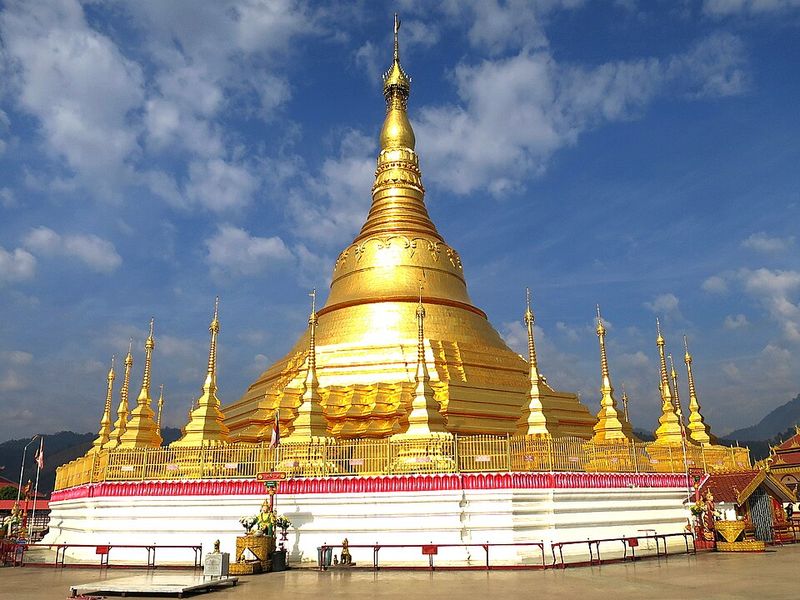
Rising above the cityscape of Yangon, the Shwedagon Pagoda is a sight to behold. This golden stupa, towering at about 112 meters, is considered Myanmar’s most sacred Buddhist site.
The pagoda is said to contain relics of four previous Buddhas, drawing devotees to its richly decorated terraces. At sunset, the stupa glows, captivating both locals and tourists alike.
Many visitors partake in the ritual of applying gold leaf to the pagoda, contributing to its shimmering facade. The Shwedagon Pagoda is more than a temple; it’s a beacon of spiritual heritage.
Kiyomizu-dera — Kyoto, Japan
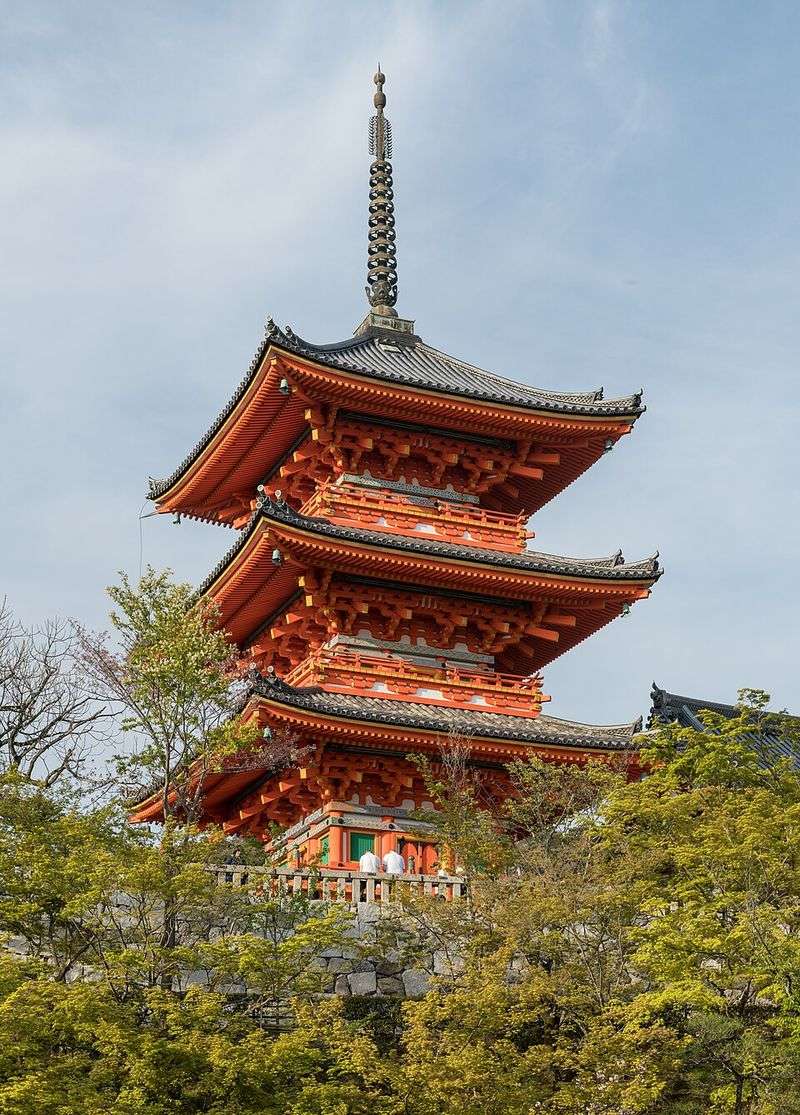
Nestled in the hills of Kyoto, Kiyomizu-dera offers a harmonious blend of nature and architecture. The temple’s wooden stage, supported by hundreds of pillars, provides stunning views over the city and seasonal cherry blossoms.
Established in 778, it is dedicated to Kannon, the goddess of mercy. The site’s name translates to ‘Pure Water Temple,’ inspired by the nearby Otowa Waterfall.
Visitors can explore the temple grounds, experiencing the serene ambiance and cultural richness. Kiyomizu-dera’s unique design and historical significance make it an essential stop on any Kyoto itinerary.
Meenakshi Amman Temple — Madurai, India

The vibrant Meenakshi Amman Temple stands at the heart of Madurai, India. Known for its stunning gopurams, these towering gateways are covered in thousands of vivid sculptures depicting Hindu deities.
This temple complex, dedicated to Goddess Meenakshi and Lord Sundareswarar, spans 15 acres and embodies Dravidian architecture. Its hallways and sanctuaries are intricately designed, highlighting the artistic prowess of its creators.
A bustling center of worship and culture, the temple hosts numerous festivals throughout the year. Meenakshi Amman Temple is a mesmerizing blend of color, devotion, and heritage.
Wat Pho (Temple of the Reclining Buddha) — Bangkok, Thailand
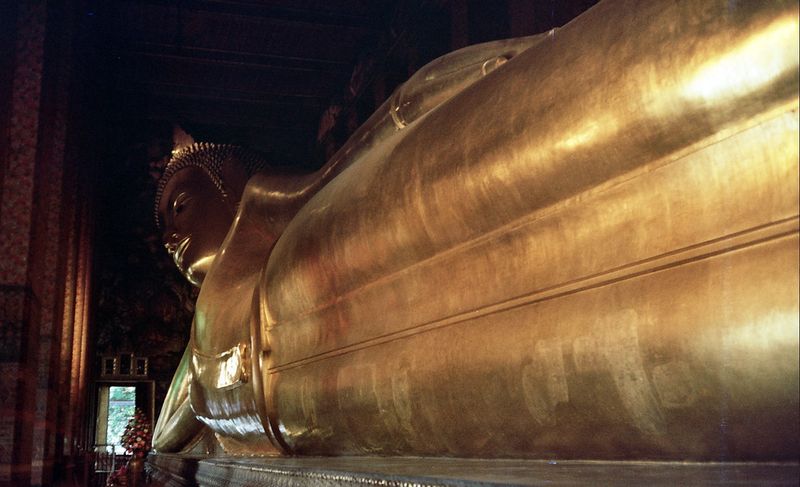
Wat Pho is home to the spectacular Reclining Buddha, a 46-meter-long statue symbolizing the attainment of Nirvana. This iconic temple in Bangkok is also known for its traditional Thai massage school.
The temple grounds boast over a thousand Buddha images, alongside beautifully decorated stupas and halls. Visitors often explore the complex, admiring its exquisite murals and serene courtyards.
As the birthplace of Thai massage, Wat Pho offers a unique cultural experience, blending spiritual and physical well-being. Its historical and cultural richness engages visitors from around the globe.
Fushimi Inari Taisha — Kyoto, Japan
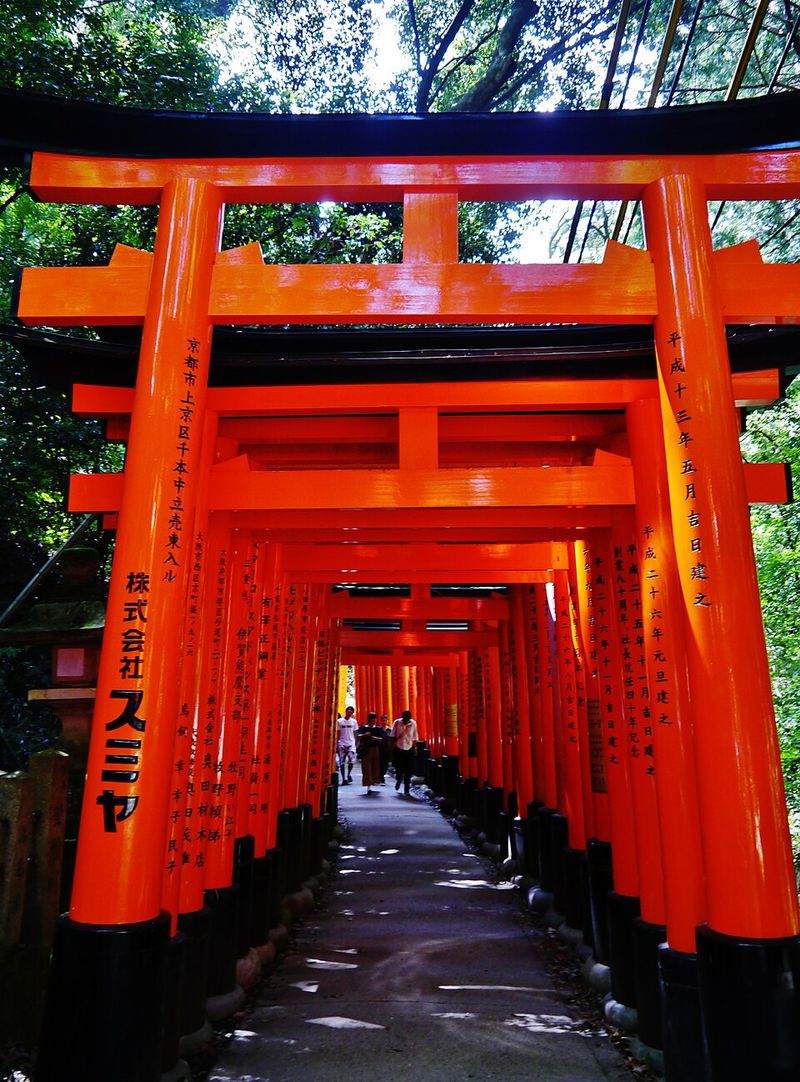
Famed for its thousands of vermillion torii gates, Fushimi Inari Taisha is one of Kyoto’s most iconic landmarks. This Shinto shrine is dedicated to Inari, the god of rice and agriculture.
The gates create a mesmerizing path up the sacred Mount Inari, offering both tranquility and stunning views of the city below. Visitors often make the pilgrimage, admiring the forest and fox statues along the way.
Known for its spiritual significance, Fushimi Inari’s vibrant gates and serene trails offer a uniquely immersive experience in nature and tradition.
Wat Phra Kaew / Emerald Buddha (Grand Palace) — Bangkok, Thailand

At the heart of Bangkok’s Grand Palace lies Wat Phra Kaew, home to the revered Emerald Buddha. This small yet significant statue is carved from jade, and its attire is seasonally changed by the Thai King.
The temple is a masterpiece of Thai architecture, with ornate golden decorations and intricate murals depicting Buddhist mythology. Visitors are often awestruck by the grandeur and detail on display.
An essential part of Thailand’s cultural identity, Wat Phra Kaew continues to fascinate tourists and locals alike, reflecting the country’s rich spiritual heritage.
Potala Palace — Lhasa, Tibet (China)

Perched on Marpo Ri Hill in Lhasa, the Potala Palace is a symbol of Tibetan Buddhism and the former residence of the Dalai Lama. Its white and red structures create a striking silhouette against the sky.
This UNESCO World Heritage site houses numerous chapels, galleries, and tombs of past Dalai Lamas, offering a glimpse into Tibet’s spiritual and political history.
Visitors can explore the palace’s halls, admiring its intricate murals and religious artifacts. Potala Palace stands as a testament to Tibet’s rich cultural legacy and spiritual devotion.
Jokhang Temple — Lhasa, Tibet (China)
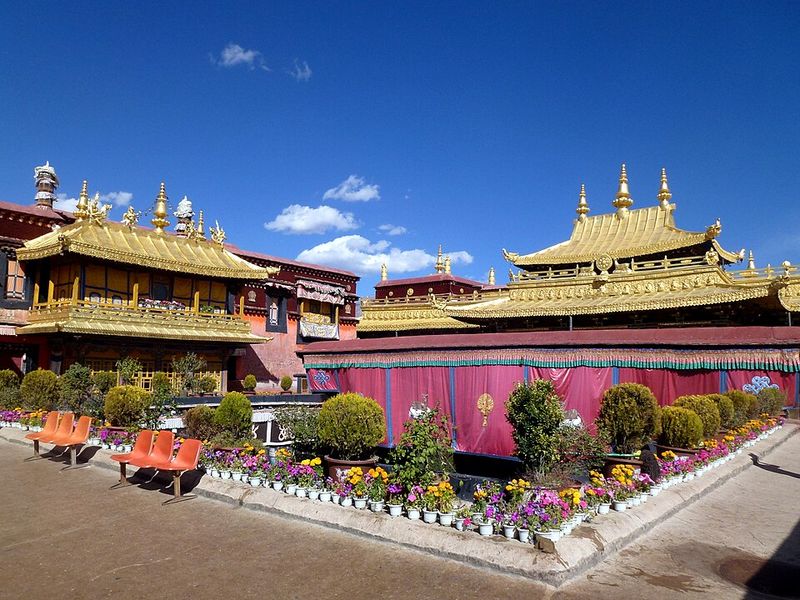
Located in the heart of Lhasa, Jokhang Temple is a revered pilgrimage destination for Tibetan Buddhists. Its golden roof gleams in the sun, drawing devotees from all over the region.
The temple houses a sacred statue of the Buddha, believed to be crafted during his lifetime. Pilgrims perform the kora, walking clockwise around the temple in a spiritual practice.
Surrounded by bustling Barkhor Street, Jokhang Temple is a vibrant center of faith and tradition, reflecting Tibet’s enduring spiritual heritage and cultural richness.
Longmen Grottoes — Luoyang, China

The Longmen Grottoes, nestled along the Yi River in Luoyang, showcase one of China’s finest collections of Buddhist art. Carved into limestone cliffs, the site features over 100,000 statues and inscriptions.
These exquisite carvings span several centuries, reflecting the evolution of Buddhist iconography and Chinese artistry. The grand Vairocana Buddha stands as a highlight, captivating visitors with its serene expression.
A UNESCO World Heritage site, the Longmen Grottoes are a testament to China’s rich cultural and religious history, offering a fascinating journey through ancient craftsmanship.
Bulguksa Temple — Gyeongju, South Korea

Bulguksa Temple, located in Gyeongju, is a masterpiece of Korean Buddhist architecture. Surrounded by lush gardens and scenic landscapes, it offers tranquility and beauty.
Built in the 8th century, the temple complex features several halls and pagodas, including the famous Dabotap and Seokgatap. These stone structures are known for their intricate design and historical significance.
As a UNESCO World Heritage site, Bulguksa Temple draws visitors seeking peace and spiritual insight. Its harmonious blend of nature and architecture reflects Korea’s cultural and religious heritage.
Pashupatinath Temple — Kathmandu, Nepal
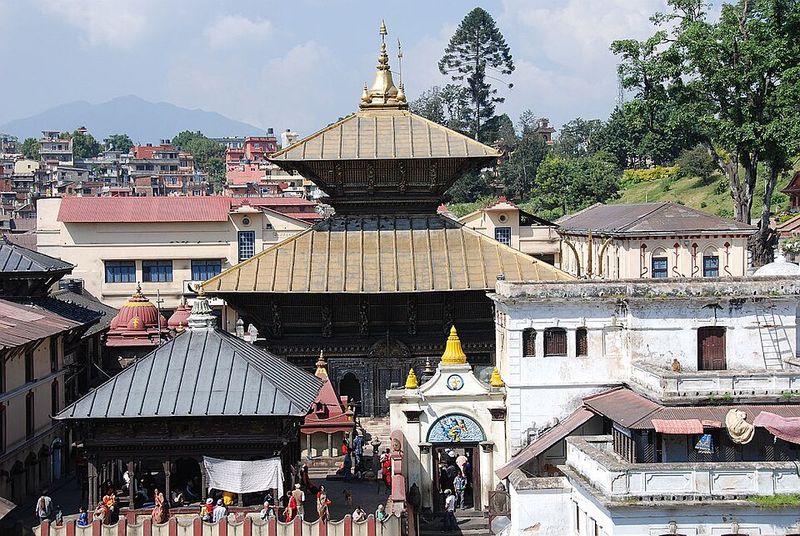
Pashupatinath Temple, revered as one of the holiest Hindu sites, sits along the banks of the Bagmati River in Kathmandu. Dedicated to Lord Shiva, its golden roof and silver doors are iconic.
The complex is a bustling hub of spiritual activity, with sadhus, pilgrims, and ceremonies illustrating rich traditions. The temple also serves as a cremation site, adding a profound layer to its spiritual landscape.
As a UNESCO World Heritage site, Pashupatinath offers deep insight into Nepal’s religious practices, attracting travelers seeking spiritual and cultural exploration.
Ise Grand Shrine (Ise Jingu) — Ise, Japan
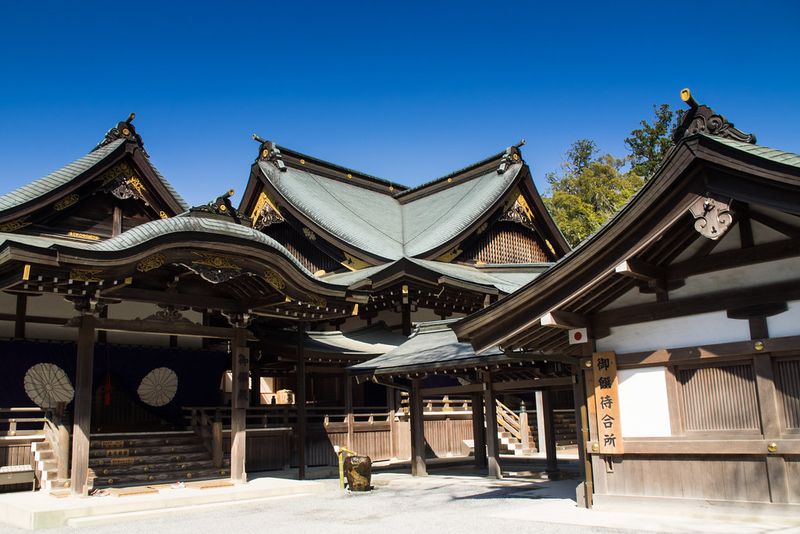
Ise Grand Shrine, or Ise Jingu, holds a special place in Japanese spirituality as the nation’s most sacred Shinto shrine. Nestled in a forest of ancient cedar trees, it exudes tranquility and reverence.
The shrine is dedicated to Amaterasu, the sun goddess, and its main structures are rebuilt every 20 years as part of a centuries-old tradition, symbolizing renewal and continuity.
Visitors experience a serene journey through the forest, absorbing the natural beauty and spiritual aura. Ise Jingu embodies the essence of Shinto beliefs and Japanese cultural heritage.

